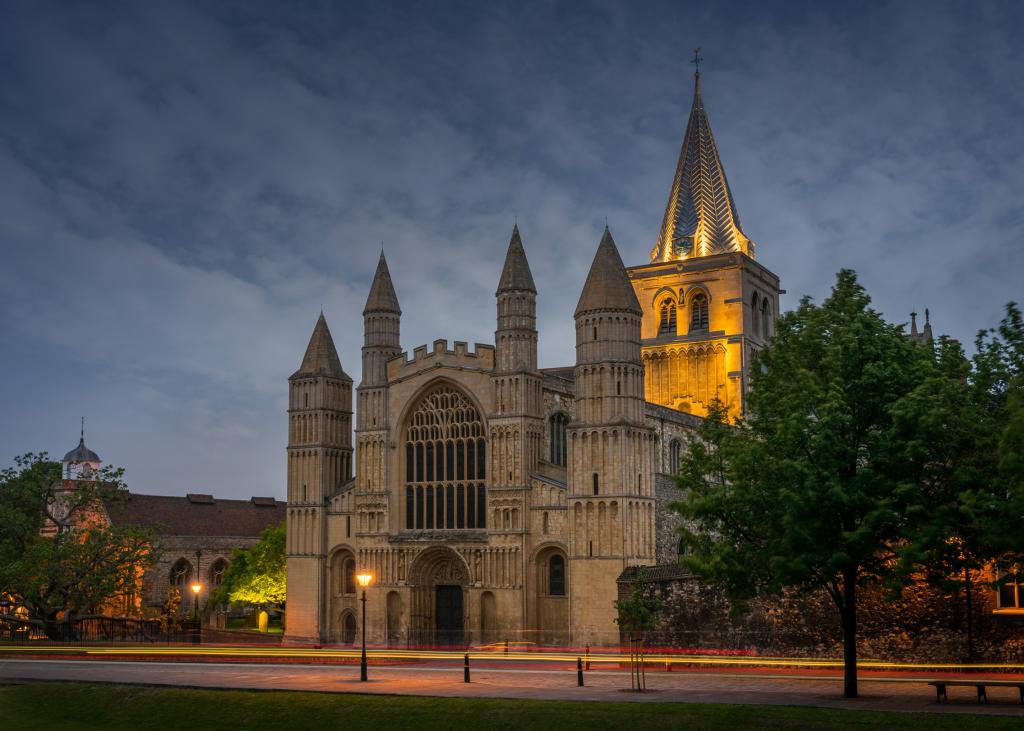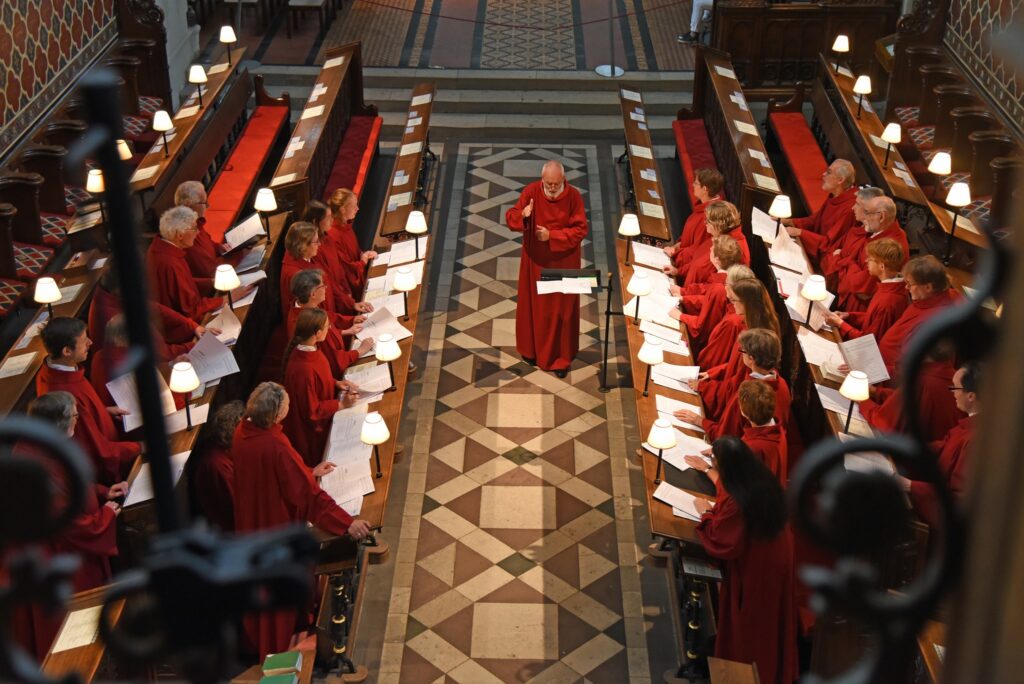Rochester Cathedral

Together with 35 of my fellow singers and our conductor, I crossed the Channel! For this week, the Domcantorij sings the Evensongs and Sunday services at Rochester Cathedral. And I thought it would be nice to write a short blog about the (medieval) history of this special cathedral where we are the “visiting choir”.
Update: I also wrote a small blog post on King Alfred & Rochester
After Canterbury, the Rochester cathedral stands out as the second-oldest in England. The establishment of the cathedral in AD 604 is immensely attributed to King Ethelbert of Kent in AD 604 (Field et al., 2017). Consecration of the cathedral was personally done by Saint Augustine and dedication laid to Andrew the Apostle (McNeill, 2017). Accompanying Augustine of Canterbury in his quest to convert pagans to Christianity in the seventh century, Justus served as Rochester’s first Bishop (Yates and Welsby, 1996). Historically, the seventh-century cathedral vanished over different epochs of reconstruction; but then again, restoration works in 1889 uncovered the building’s original foundation.
In 1077, after the invasion of England by the Normans in 1066, Gundulf took over the position of Bishop of Rochester (Thornton, 2018). During his term as Bishop, he constructed the Castle situated opposite the Cathedral along with the renowned Tower of London. Apart from that, Gundulf initiated the design process of a new Cathedral of Rochester (Doe, 2017). Rendering to Keynes (2015), in the year 1115, Ernulf took over the position of Bishop and in 1137 and 1179, the Cathedral was engulfed by infernos that yielded a lot of damage. Moreover, giving to Field et al. (2017), in 1215, raiders allied to King John looted precious items from the Cathedral and in 1264 looters linked to Simon de Monfort who laid siege on the city also stole other precious items.
In 1504, conferring to traditional British history, King Henry VIII met Anne of Cleves in the cloisters of this famous Cathedral (Doe, 2017). Nevertheless, over the eighteenth and nineteenth century, Rochester had turned out to be one of the poorest Archdioceses in England (Thornton, 2018). For subsequent time, the Cathedral was robbed of treasures by rowdy soldiers in the 1800s (Keynes, 2015). Incredibly, the Cathedral turn out to be a room of unkind standing, where every so often betting and drinking took place. McNeill (2017) describes the episcopal center during that time as a shabby place. Over the nineteenth century, the Cathedral had gone through several processes of restoration, and ultimately, in 1880, through the work of Gilbert Scott, the Cathedral earned restoration that offered it the modern-day appearance.
References
Doe, N. (2017). The Legal Architecture of English Cathedrals. Routledge.
Field, F., Atkinson, P., Henshall, N., Hoyle, D., Irvine, C., Kennedy, J., … & Shephard, R. (2017). Holy Ground: Cathedrals in the twenty-first century. Sacristy Press.
Keynes, S. (2015). King Ethelred the Unready and the Church of Rochester. In Textus Roffensis: Law, Language, and Libraries in Early Medieval England.
McNeill, J. (2017). The medieval cloister in England and Wales. Routledge.
Thornton, D. E. (2018). The Last Monks of Worcester Cathedral Priory. Midland History, 43(1).
Yates, N., & Welsby, P. A. (Eds.). (1996). Faith and Fabric: A History of Rochester Cathedral, 604-1994 (Vol. 4). Boydell & Brewer.

0 Comments on “Rochester Cathedral”